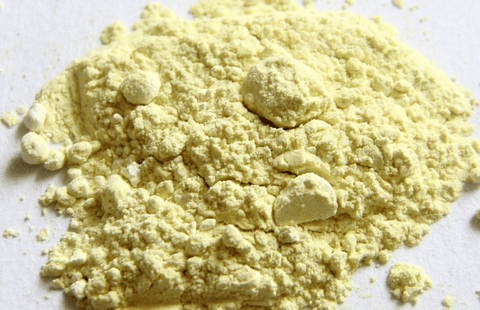
MSE PRO Bismuth (III) Oxide (Bi2O3) Powder, 99.999% (5N) (Metal Basis)
SKU: PO2301
High Purity Bismuth (III) Oxide (Bi2O3) Powder, 99.999% (5N) (Metal Basis)
CAS Number: 1304-76-3
Product Number: PO2301
Package Size: 100 grams bottle
Product Purity: 99.999% (5N) (metal basis) high purity grade
Properties
Formula: Bi2O3
Formula Weight: 465.96 g/mol
Form: Yellow powder
Melting point: 817°C
Density: 8.9 g/cm3
Solubility in water: insoluble
Solubility: soluble in most acids
Solubility: soluble in most acids
Applications
Bi2O3 is used in solid-oxide fuel cells (SOFCs) as well as a raw material is making optical materials. Interest has centered on δ- Bi2O3 as it is principally an ionic conductor. In addition to electrical properties, thermal expansion properties are very important when considering possible applications for solid electrolytes. High thermal expansion coefficients represent large dimensional variations under heating and cooling, which would limit the performance of an electrolyte. The transition from the high-temperature δ- Bi2O3 to the intermediate β- Bi2O3 is accompanied by a large volume change and consequently, a deterioration of the mechanical properties of the material. This, combined with the very narrow stability range of the δ-phase (727–824 °C), has led to studies on its stabilization to room temperature.
Bi2O3 easily forms solid solutions with many other metal oxides. These doped systems exhibit a complex array of structures and properties dependent on the type of dopant, the dopant concentration and the thermal history of the sample. The most widely studied systems are those involving rare earth metal oxides, Ln2O3, including yttria, Y2O3. Rare earth metal cations are generally very stable, have similar chemical properties to one another and are similar in size to Bi3+, which has a radius of 1.03 Å, making them all excellent dopants. Furthermore, their ionic radii decrease fairly uniformly from La3+ (1.032 Å), through Nd3+, (0.983 Å), Gd3+, (0.938 Å), Dy3+, (0.912 Å) and Er3+, (0.89 Å), to Lu3+, (0.861 Å) (known as the ‘lanthanide contraction’), making them useful to study the effect of dopant size on the stability of the Bi2O3 phases.
Bi2O3 has also been used as sintering additive in the Sc2O3 - doped zirconia system for intermediate temperature SOFC.
